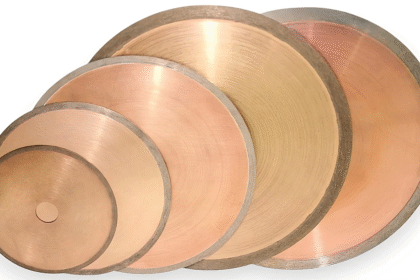Work at height remains one of the most critical hazards in industrial and construction projects. Falls can result in severe injuries, downtime, and regulatory penalties.
Even the most advanced fall protection systems fail if improperly installed or misused. Organizations often overlook simple yet critical errors during installation, which can compromise safety.
Inovatix Indian, a trusted manufacturer, supplier, and specialist of fall protection solutions, designs and provides fall arrest systems engineered for maximum reliability, compliance, and worker protection.
This guide highlights seven common mistakes during installation and provides actionable steps to prevent them, ensuring your teams remain safe and compliant.
Mistake 1: Using Uncertified or Low-Quality Components
One of the most frequent mistakes is sourcing substandard harnesses, lifelines, or connectors.
-
Low-quality materials may fail under stress, especially during a fall.
-
Non-certified equipment often lacks proper testing for shock absorption and load capacity.
Best Practice:
-
Use components certified to EN 361, EN 353, and IS 3521 standards.
-
Purchase directly from trusted manufacturers like Inovatix Indian to ensure full compliance.
Key Insight: Even minor defects in connectors or harness stitching can result in catastrophic failure.
Mistake 2: Improper Anchorage Point Selection
The anchorage point is critical for system effectiveness. Common errors include:
-
Choosing weak or non-load-bearing points.
-
Anchoring to surfaces prone to vibration or corrosion.
-
Ignoring anchor location height, which affects fall distance.
Best Practice:
-
Conduct a structural assessment to identify secure anchor points.
-
Ensure compatibility with the type of fall arrest system (roof, ladder, or horizontal).
-
Use certified anchors and follow manufacturer guidelines.
Example: A rooftop horizontal lifeline anchored to an unsupported beam can fail, putting multiple workers at risk.
Mistake 3: Incorrect Harness Fit and Adjustment
A harness that is too loose or improperly worn can increase the risk of injury during a fall. Common mistakes include:
-
Skipping chest strap adjustments.
-
Using a harness not sized for the worker.
-
Failing to connect the dorsal D-ring correctly.
Best Practice:
-
Perform a full harness inspection before use.
-
Adjust straps so the harness sits snugly but allows mobility.
-
Ensure the D-ring aligns with the worker’s center of gravity.
Pro Tip: Conduct a fit test for every team member, especially when using personal fall arrest systems.
Mistake 4: Ignoring Fall Clearance Distance
Installing a system without calculating the correct fall clearance is a frequent oversight.
-
Insufficient clearance may result in the worker hitting the ground or an obstruction.
-
Overestimating clearance can leave slack, reducing system effectiveness.
Best Practice:
-
Calculate total fall distance including harness stretch, lanyard elongation, and deceleration distance.
-
Consider obstacles below the work area.
-
Adjust anchor height or lifeline length accordingly.
Example: Ladder fall arrest systems installed too low on vertical ladders can still allow contact with lower steps or equipment.
Mistake 5: Overloading the System
Many installations fail to consider the maximum load of a fall arrest system.
-
Using a system rated for a single user with multiple workers simultaneously.
-
Ignoring additional equipment weight carried by the worker.
Best Practice:
-
Verify the maximum user load for each system component.
-
Use multi-user certified horizontal lifelines where necessary.
-
Include the worker’s gear weight in load calculations.
Key Insight: Overloaded systems may not engage correctly during a fall, causing serious injury.
Mistake 6: Failing to Train Workers Properly
Even perfectly installed systems are ineffective without proper training.
Common issues include:
-
Workers not knowing how to attach the lanyard or D-ring.
-
Misunderstanding emergency descent or rescue procedures.
Best Practice:
-
Conduct hands-on training for all personnel.
-
Simulate fall scenarios in a controlled environment.
-
Review safety protocols regularly.
Inovatix Indian offers training support for teams to ensure correct usage of fall protection systems in industrial and EPC projects.
Mistake 7: Neglecting Regular Inspection and Maintenance
Installation is only the first step; ongoing maintenance is critical.
-
Components exposed to weather, chemicals, or repeated use degrade over time.
-
Ignoring inspection schedules can lead to unnoticed damage.
Best Practice:
-
Inspect harnesses, connectors, and lifelines before each use.
-
Schedule quarterly professional inspections.
-
Replace any worn or damaged parts immediately.
Example: A ladder fall arrest system in a chemical plant requires frequent inspection for corrosion to maintain safety integrity.
Real-World Mini Case Studies
Case Study 1: Ladder Fall Arrest System in an Industrial Plant
A large manufacturing plant installed vertical ladder systems without verifying anchor points.
-
Result: Workers experienced excessive slack, causing near-miss incidents.
-
Solution: Inovatix Indian engineers assessed the anchors, repositioned the lifeline, and provided a certified ladder fall arrest system.
-
Outcome: Zero incidents after installation and full regulatory compliance.
Case Study 2: Horizontal Lifeline on a Rooftop
A rooftop maintenance project initially used untested horizontal lifelines.
-
Result: Workers were hesitant to operate at height due to safety concerns.
-
Solution: Customized horizontal lifeline systems from Inovatix In
Conclusion
Proper installation of fall arrest systems is critical to worker safety, operational efficiency, and regulatory compliance.
Even small mistakes—like improper anchor selection or harness fit—can compromise protection and risk serious injury.
Inovatix Indian provides comprehensive solutions for industrial, EPC, and infrastructure projects, ensuring certified fall protection systems are correctly installed, maintained, and monitored.
Every worker deserves safety. Equip your team with certified fall protection today.
Enquire now for bulk pricing, request a quote, or customize solutions with Inovatix Indian.





